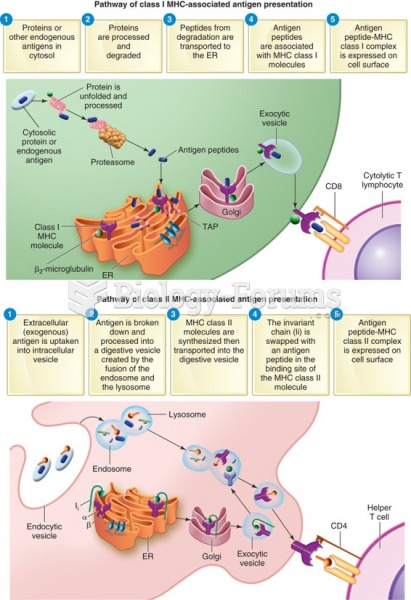Answer to Question 1
2. Epilepsy may be caused by a head injury..
4. With some cases of epilepsy, the cause is never determined..
5. A stroke, or brain attack, could increase the risk for developing epilepsy..
Rationale:
Epilepsy is a disorder where seizures occur on a chronic basis. Head trauma is a known cause of seizures. In some cases, the exact etiology may not be identified. Changes in cerebral perfusion such as hypotension, strokes or brain attacks, and shock may be causes of seizures. There is no known correlation with anorexia nervosa or other eating disorders and the development of epilepsy. Excessive levels of stress cannot disrupt cerebral oxygen to the extent that epilepsy would occur.
Answer to Question 2
4. We understand that are all the chromosomes are the same size in males and females alike..
Rationale:
Not all chromosomes are the same size. A basic understanding of the cell, DNA, cell division, and chromosomes is important for young families receiving genetic counseling. The cell nucleus contains about 6 feet of DNA that are tightly wound and packaged into 23 pairs of chromosomes, making a complete set of 46 chromosomes. The structure and number of chromosomes can be shown by karyotype, or picture of an individual's chromosomes. There are two copies of each chromosome. One copy, or half of the complete set of these 46 chromosomes, is inherited from the mother, and the other copy is inherited from the father. For example, an individual will have two 1 chromosomes, one inherited from her mother and one inherited from her father. These two copies or pairs of inherited chromosomes are called homologous pairs. Chromosomes are numbered according to size, with chromosome 1 being the largest and chromosome 22 being the smallest. The first 22 pairs of chromosomes, known as autosomes, are alike in males and females. The 23rd pair, the sex chromosomes, determines an individual's gender. A female has two copies of the X chromosomes (one copy inherited from each parent) and a male has one X chromosome (inherited from his mother) and a Y chromosome (inherited from his father). These X and Y chromosomes are known as sex chromosomes. The remaining 22 pairs of non-sex chromosomes are alike in both males and females, and are called autosomes.







